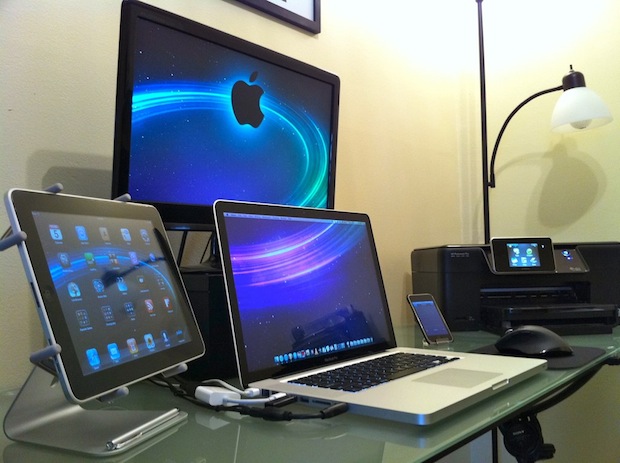It can be annoying to use flash drives to transfer content, so you’ll be pleased to know Mac has provided an in-built feature to connect Macbook to an iMac device that is on the same Wi-Fi network.
It allows you to transfer files, and even control one device from another. To connect Macbook to an iMac opens a wide range of options for sharing resources or collaborating on projects. If you have a MacBook Air without a disc drive, you can use the one on your iMac instead of buying an external drive.
Once the Macs can communicate with each other, you’ll have to specify what you want to share, and with whom to share it.
Here we will look into two simple methods to connect MacBook to an iMac:
Method 1: Using your iMac as a Monitor
Follow the below steps to connect MacBook to an iMac:
Step 1: Determine the cable you’ll need for your iMac. The type of cable you’ll need varies by model:
- iMac 27-inch (2009): Mini DisplayPort to Mini DisplayPort cable.
- iMac 27-inch (2010): Mini DisplayPort to Mini DisplayPort cable.
- iMac (2011- early 2014): Thunderbolt cable.
- iMac models from late 2014 (the Retina 5k model) and later can’t be used as displays.
Step 2: Locate the port on your MacBook.
Step 3: Turn on both computers. If you haven’t yet logged in to either computer, you should do so now.
Step 4: Connect the Mini DisplayPort or Thunderbolt cable to both computers.
Step 5: Press Command + 2 on the iMac. The iMac’s display will now show the MacBook’s screen instead of its own.
Method 2: Sharing Files Between Computers
Follow the below steps for sharing files between computers:
Step 1: Connect both Macs to the same wireless network.
Step 2: Click the Apple menu on the computer that has something to share. It’s at the top-left corner of the screen.
Step 3: Click “System Preferences”.
Step 4: Click Sharing. A list of sharing services will appear.
Step 5: Set up file sharing.
- Click File Sharing.
- Click + under the folder list.
- Select a folder and click Add.
- Anyone with an account on this Mac can access it from the other computer. If you want to restrict access to certain users, select the folder, click + under the user list, then select who should have access.
- You can add users with local accounts or by Apple ID by selecting them from your contacts.
- Make note of the IP address on the Sharing screen. The syntax of IP address: ″afp://10.0.0.1″ or ″smb://10.0.0.1″.
Step 6: Open Finder on the other computer.
Step 7: Click the “Go” menu. It is at the top of the screen.
Step 8: Click “Connect to Server.
Step 9: Enter the IP address for the other computer. This is the address present on the other computer’s Sharing screen.
Step 10: Click “Connect”.
Step 11: Choose how to connect.
- Select Registered User.
- Select Apple ID to log in that way.
- Select Guest if the files don’t require a login.
Step 12: Follow the on-screen instructions to log in. Once you’ve connected to the other computer, you can access its files.
Step 13: Set up printer sharing (optional).
To select specific users, click + under the user list, then choose who should be allowed to print.
Step 14: Set up other types of sharing (optional). If you want users of the other computer to be able to connect to this one for remote administration or screen sharing, choose the required option from the list, then follow the same instructions as you did for file and printer sharing.
So these are the two methods to connect a MacBook to an iMac.

Thank you for your sharing. I am worried that I lack creative ideas. It is your article that makes me full of hope. Thank you. But, I have a question, can you help me?